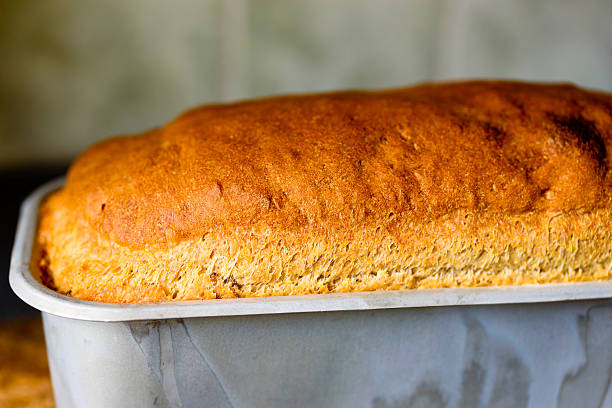We all know that toast tastes better than bread, that a charred sausage tastes better than a boiled sausage, and that dark roasted coffee beans have more flavor than light roasts. This is due to the Maillard reaction. The Maillard reaction is a chemical reaction that creates thousands of flavors in foods and matches them with matching aromas. A Maillard reaction component could make your dish more memorable.
Maillard Reaction Definition
When food is heated, the Maillard reaction occurs. This chemical reaction involves reduced sugars and amino acid protein. This reaction gives foods a complex flavor when roasted, seared or charred.
Maillard Reaction Pronunciation
Maillard can be pronounced “my-ard” and is named after Louis Camille Maillard (French chemist), who discovered the science behind the Maillard reaction in 1912.
What Foods are Affected by the Maillard Reaction?
Both sugar and protein molecules are present in the Maillard reaction-affected foods. These are just a few examples:
- Bread has a darker, thicker crust.
- Eggs– Creates a brown lining with crackled edges
- Fish – Seared on a crunchy, brown outer coating
- Beer– Malts are roasted at different degrees and then added to the brewing process
- Coffee– To achieve different coffee notes, coffee beans are roasted and ground.
- Chocolate– Cacao beans are roasted after fermented and dried to add chocolate notes.
- Soy Sauce Wheat berries are roasted and then ground into a sauce that can be added to soybeans, water and salt.
You can get different types of Maillard reaction compounds depending on how long you prepare food, the temperature, and the type of sugars or proteins involved. Some reactions can produce sweet, nutty and caramel notes on bread, coffee beans, and cacao beans. Some reactions can produce meaty, smoky and earthy flavors, most commonly found in meat, fish and sometimes beer.
Sometimes, the Maillard reaction will enhance existing flavors and not add new ones. However, the Maillard reaction will always result in a crispy texture and golden color, a culinary duo that’s timeless.
How to Get a Maillard Reaction?
We now know how delicious the Maillard reaction can be on food. Let’s discuss the best way to achieve a Maillard reaction.
Keep it dry
Maillard reaction is best for very dry foods. You’re just steaming your food. To achieve a nice sear, ensure that your fish and meat have been dried from any excess moisture. Cacao or coffee beans should also be completely dried.
Do a Wash
Awash that contains both sugars and amino acids can enhance the Maillard reaction in meat, fish, and bread.
- Fish and meat: After the excess moisture has been removed, you can wash with reducing sugars (such as corn syrup or Invert sugar) and baking soda. Baking soda makes amino acids more responsive to pH changes. Combine the ingredients and apply to the meat.
- Bread If a recipe calls to make egg wash, don’t skip this step. Due to the sugars, protein and protein in eggs and milk, a thin layer of egg wash (one egg whisked together with one tablespoon milk) will result in a smooth and even Maillard reaction.
- Pretzels If you have ever eaten a traditional German pretzel, you will be familiar with their mahogany, chocolate brown color, beautiful sheen and distinctive pretzel flavor. Traditional German pretzels are dipped in a lye solution, which is food-grade lye mixed with water before being baked. Lye, an alkaline, is another reactant that can increase the pH of amino acids. This causes a Maillard reaction.
Increase the temperature
The ideal temperature for the Maillard reaction is between 284 and 330 degrees Fahrenheit (140 to 160 degrees Celsius). The Maillard reaction begins when food reaches 350° Fahrenheit (176° Celsius).
Increase the cooking time
Have you ever been to a bakery and see the different bread crust shades? This is not how sourdough was made but how long it baked. The lighter sourdoughs were removed from the oven sooner than, the darker ones. However, the Maillard reaction time of the oven was longer for the darker sourdoughs. The darker sourdoughs will have more flavor and a deeper smell.
Maillard Browning
We all know that the Maillard reaction is only possible when both amino acids and sugars are in food. But How can these create brown food color? When heated, the sugar compounds and amino acids form rings. These ring formations reflect sunlight, giving food a brown hue.
Non-Enzymatic Browning vs. Enzymatic Browning
Enzymatic browning refers to a reaction that occurs from oxidation and turns certain foods brown, like fruit and vegetables such as bananas, cut apples, and pears. Non-enzymatic browning occurs when chemicals are used to prepare food using certain heat transfer cooking apps. Non-enzymatic browning is used in the Maillard reaction and caramelization.
Maillard Reaction vs. Caramelization
While caramelization and the Maillard reaction involve browning food, their causes are very different. When there are both sugars or proteins in food, the Maillard reaction occurs. The Maillard reaction can be seen in bread, coffee, cacao beans, beer, and eggs (think: egg wash or fried eggs). Fish, meat, and poultry.
Caramelization occurs when sugar is all that is in the food. Caramelization can occur on fruits, honey, maple syrup, and caramel sauce is made of caramel candies.

